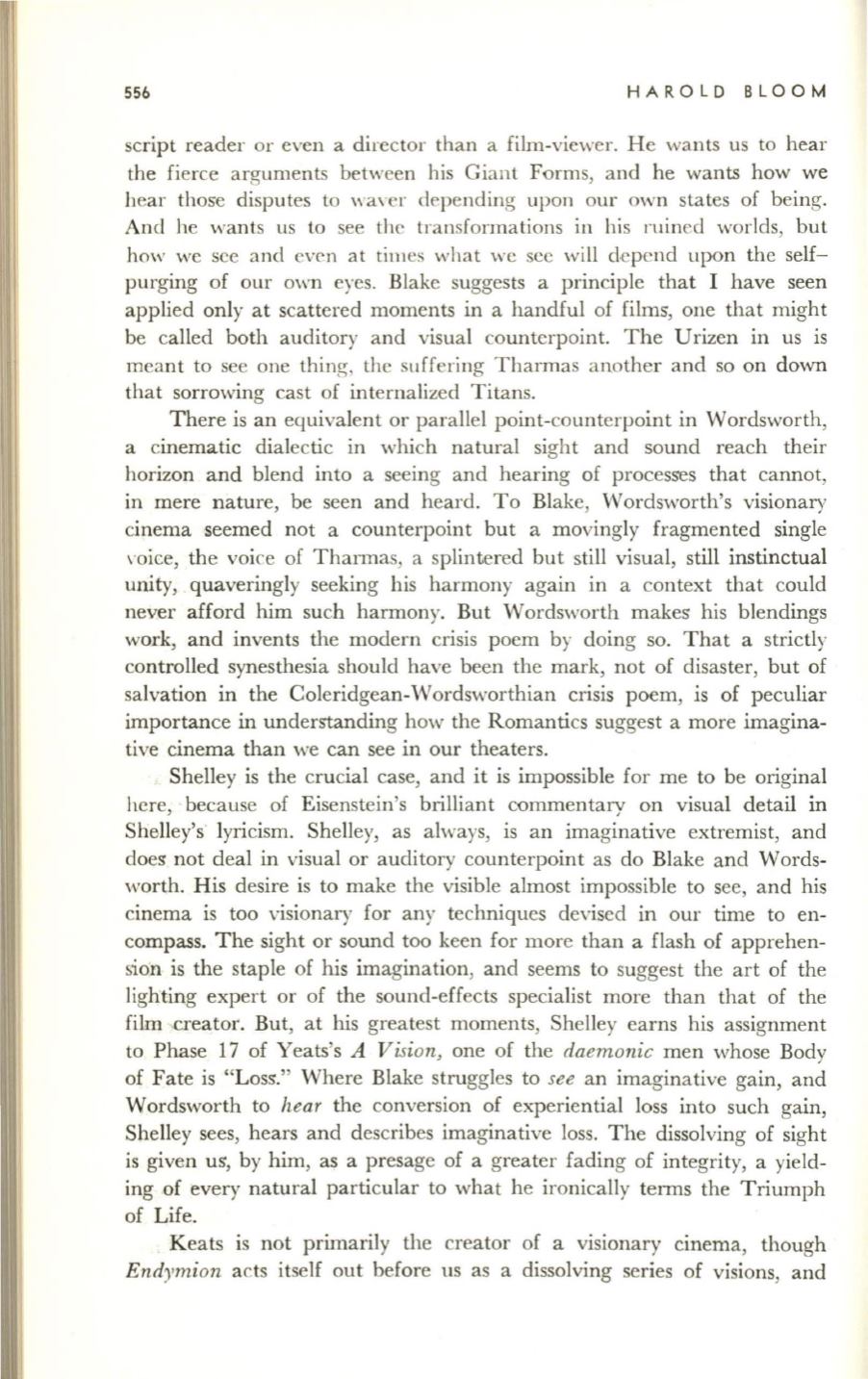
556
HAROLD BLOOM
script reader or even a director than a film-viewer. H e wants us to hear
the fierce arguments between his Giant Forms, and he wants how we
hear those disputes to waver depending upon our own states of being.
And he wants us to see the transformations in hi s ruined worlds, but
how we see and even at titlles what we sec will depend upon the self–
purging of our own eyes. Blake suggests a principle that I have seen
applied only at scattered moments in a handful of films, one that might
be called both auditory and visual counterpoint. The Urizen in us is
meant to see one thing, the su ffering Tharmas another and so on down
that sorrowing cast of internalized Titans.
There is an equivalent or parallel point-counterpoint in Wordsworth,
a cinematic dialectic in which natural sight and sound reach their
horizon and blend into a seeing and hearing of processes that cannot,
in mere nature, be seen and heard. To Blake, vVordsworth's visionary
cinema seemed not a counterpoint but a movingly fragmented single
"oice, the voice of Thannas, a splintered but still visual, still instinctual
unity, quaveringly seeking his harmony again in a context that could
never afford him such harmony. But Wordsworth makes his blendings
work, and invents the modern crisis poem by doing so. That a strictly
controlled synesthesia should have been the mark, not of disaster, but of
salvation in the Coleridgean-Wordsworthian crisis poem, is of peculiar
importance in understanding how the Romantics suggest a more imagina–
tive cinema than we can see in our theaters.
Shelley is the crucial case, and it is impossible for me to be original
here, because of Eisenstein's brilliant commentary on visual detail in
Shelley's lyricism. Shelley, as always, is an imaginative extremist, and
does not deal in visual or auditory counterpoint as do Blake and Words–
worth. His desire is to make the visible almost impossible to see, and his
cinema is too visionary for any techniques devised in our time to en–
compass. The sight or sound too keen for more than a flash of apprehen-
510n
is the staple of his imagination, and seems to suggest the art of the
lighting expert or of the sound-effects specialist more than that of the
film creator. But, at his greatest moments, Shelley earns his assignment
to Phase 17 of Yeats's
A V ision,
one of the
daemonic
men whose Body
of Fate is "LosS'." Where Blake struggles to
see
an imaginative gain, and
Wordsworth to
hear
the conversion of experiential loss into such gain,
Shelley sees, hears and describes imaginative loss. The dissolving of sight
is given us, by him, as a presage of a greater fading of integrity, a yield–
ing of every natural particular to what he ironically tenns the Triumph
of Life.
. Keats is not primarily the creator of a visionary cinema, though
End'ymion
acts itself out before us as a dissolving series of visions, and


